Anka Leśniak
works
biography texts contact
2020
2019
2018
2017
2016
2015
2014
2013
2012
2011
2010
2009
2008
2007
2006
2004
WORKS 2018
Women Food Riots
installation, performance - a pre-event of
Women's Anger
The Anniversary of the Women's Hunger March in Łódź in 1981
organizer: Łódzki Szlak Kobiet /Lodz Women's Heritage Trail/
Freedom Square, Łódź
The Women's Hunger March in Łódź in 1981 as archival photographs show, was the largest and also the most stirring of protests in a series of similar events in Poland. Its participants were mainly mothers, often with small children by the hand, in baby carriages or marching next to their parents. Women took to the streets, desperate due to the difficulty of getting food. After their full time work and household chores, women often spent long hours waiting in queues for food, depriving them of free time for themselves. Today, few people remember about the Women's Hunger March in Łódź, or the women participators - witnesses of history who took part in it.

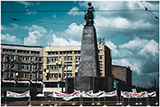
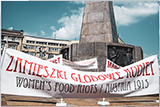
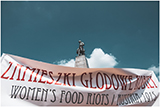
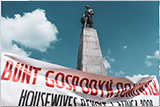

photo: HaWa
The Women's Hunger March in Łódź was a part of a series of similar protests that took place in the past and yet still happens today in different parts of the world. The so-called Food Riots (riots caused by food shortages) have one thing in common. Very often, women are their initiators and constitute the majority of protesters. As a few examples we can list: Women's March on Versailles on the eve of the French Revolution (1789), March of Women in St. Petersburg - an inflammatory spark to the outbreak of the February Revolution (1917), protests and riots caused by women in 1863 during the Civil War in the United States, women who marched to the presidential palace in Chile in 1971 or the more contemporary women's demonstrations in Egypt in 2017 and the women's protests in Fukushima in 2011 against the distribution of contaminated food.

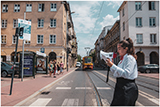
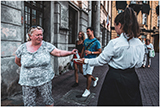

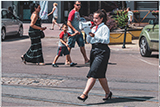

photo: HaWa
The numerous participation of women in this type of protest is connected with the fact that they are the persons mainly responsible for obtaining and preparing food. And the more traditional the society, the more strict and defined women's duties are in this regard. When women did not yet have the right to vote, taking to the streets was the only possible manner to make their voices heard. Women took and still take to the streets when the basic rights of their families are not respected, such as the right to an everyday meal.
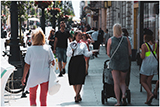
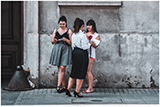
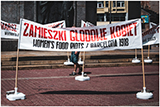
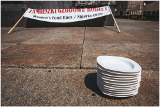

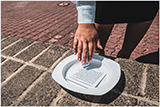
photo: HaWa
Protests and riots due to food shortages erupted in various parts of the world and in different political and economic systems. However, they have always been in the regions under governments based on patriarchal values, corruption, regime or war. Women as a social group did not play a decisive role, but tried to cope with everyday life within the framework of the situation in which they lived. Women's street protests are caused by a desperation, which has a revolutionary potential. In many cases women's protests became a harbinger of social change. At the same time, protests caused by the lack of food show that the food industry, including the commodification of animals, is inscribed in a patriarchal system based on violence and hierarchy. It takes various forms - from the market economy based on the power of companies and trade, to communist or religious regimes. The more it goes towards extremes, the greater is the risk of disaster and the greater the risk of women's anger.
At Freedom Square in Łódź, I set up 11 banners representing the dates and regions where women protested against food shortages. The installation consisting of banners was the background for my performance, during which I walked with a megaphone around Freedom Square and Piotrkowska street, reading fragments of articles about food riots in various parts of the world, including the Women's Hunger March in Łódź. I was also giving out small cards with information about the women’s food riots to passers-by. The rest of the cards I put on white plates arranged like tableware at one corner of Freedom Square.
I also invited other women artists from Łódź to participate in the event. The artists one after another or sometimes simultaneously performed around the square. Izabela Maciejewska made a performative Statue of Sisterhood with the use of Yoga poses. Ola Kozioł symbolically washed the statue of Tadeusz Kosciuszko ( a Polish hero) that towers above Freedom Square. Aurelia Mandziuk gave to the people leaflets with information about the strike of women textile workers preceding the women's hunger march in Lodz. Ewa Żochowska and Natalia Kalisz were standing dressed in white with white masks on their faces, holding a white transparent object, on which the word 'hunger' was written in white.